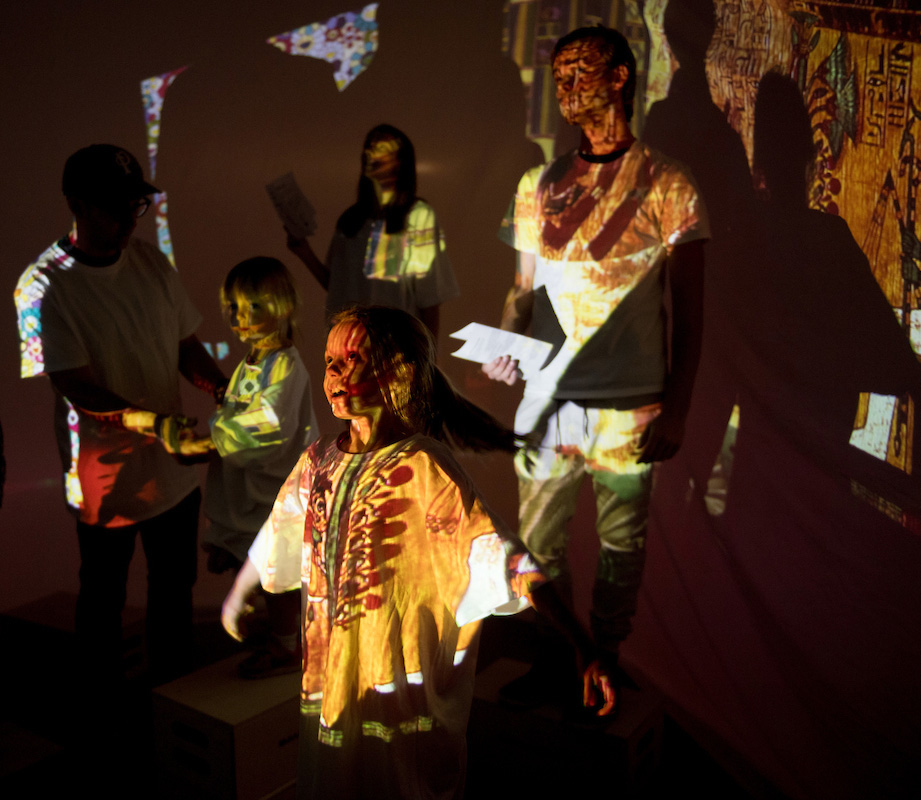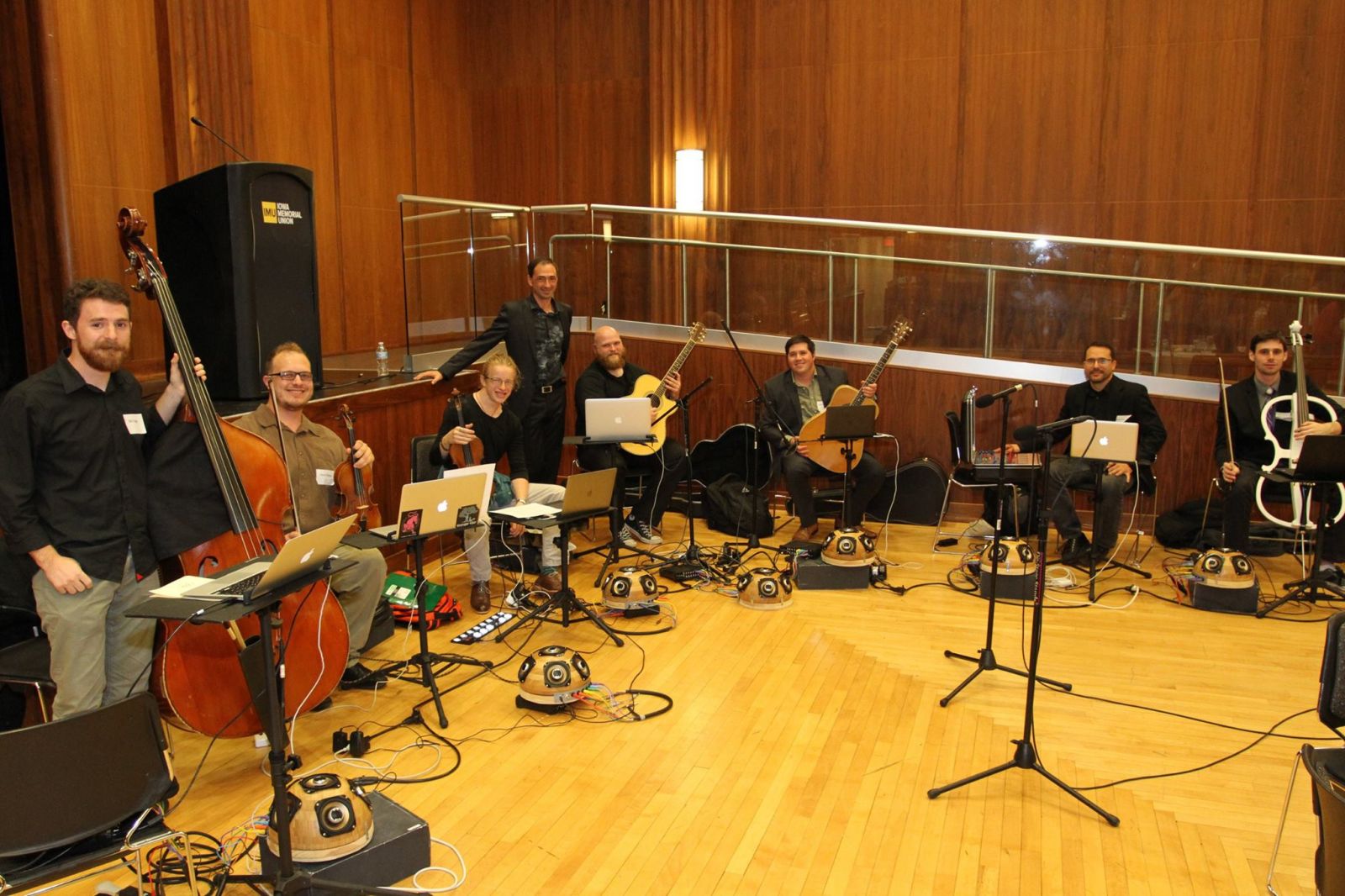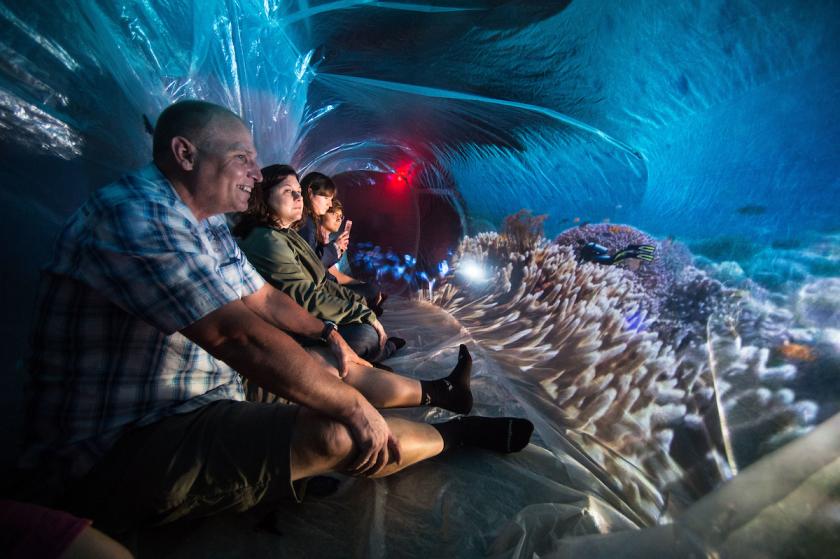College of Liberal Arts & Sciences
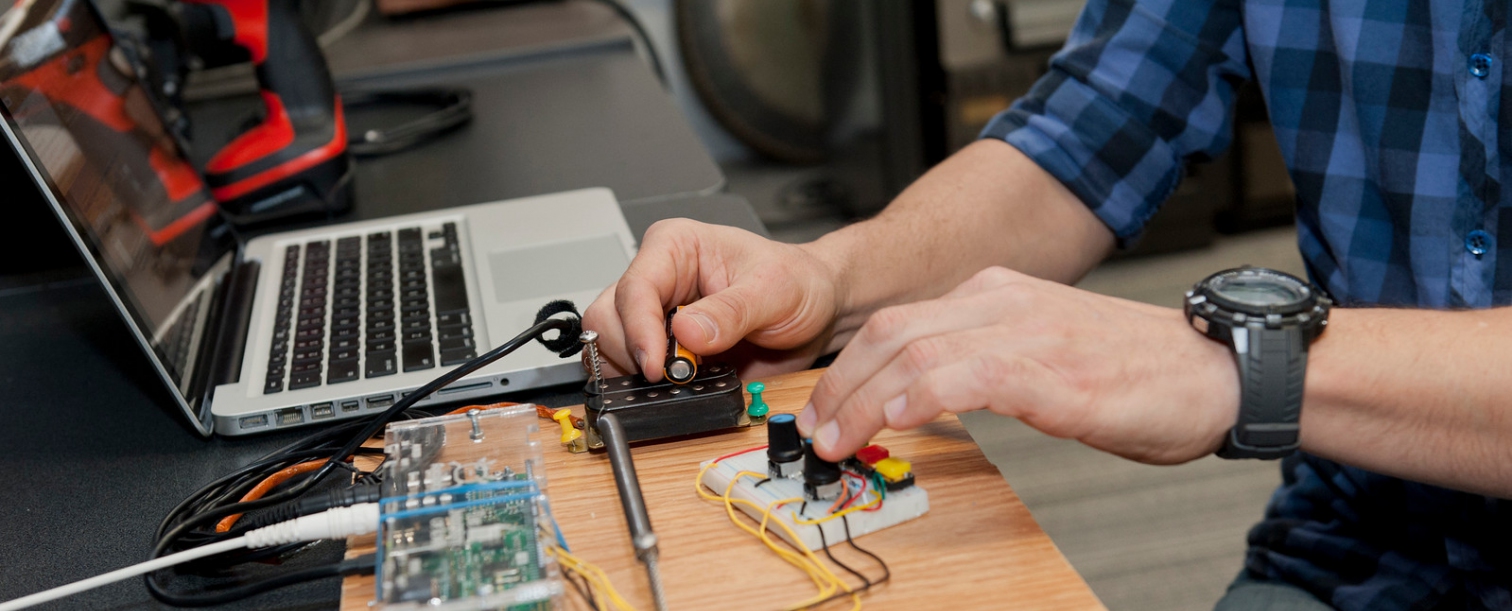
Certificate in Digital Arts
What is Public Digital Arts?
Public Digital Arts are digital technologies that transform how people create, perform, and experience art.
Why should I get a certificate in Public Digital Arts?
The goal of the Public Digital Arts Certificate Program is to provide students with the skills they need to apply cutting edge technologies and multiple media platforms to new forms of artistic expression. The program offers courses and personal guidance so students can make use of campus resources to meet their educational needs. Artists, engineers, computer scientists and students from many fields collaborate on projects they design together.
Program faculty are experts in Public Digital Arts and come from Art and Art History, Cinema, Computer Science, Dance, Theatre, Engineering, Music and other departments.
Who can get a certificate in Public Digital Arts?
Any student admitted to the University of Iowa who is not concurrently enrolled in a UI graduate or professional degree program.
How can I earn a certificate?
The certificate requires a minimum of 24 semester hours, with at least 18 earned at the University of Iowa. Two specific courses, five electives and a capstone project are required to complete the program.
Two Specific Courses
| Course | Hours |
|---|---|
| DIGA:2800 Digital Arts: an Introduction | 3 s.h. |
| DIGA:3895 Performance, Arts & New Technologies in Society | 3 s.h. |
Five Electives
| Course | Hours |
|---|---|
| CS Elective | 3 s.h. |
| Elective 1 | 3 s.h. |
| Elective 2 | 3 s.h. |
| Elective 3 | 3 s.h. |
| Elective 4 | 3 s.h. |
Capstone Project
| Course | Hours |
|---|---|
| Capstone Project | 3 s.h. |
Two required courses (6 s.h.)
1. DIGA:2800 Digital Arts: an Introduction (3 s.h.)
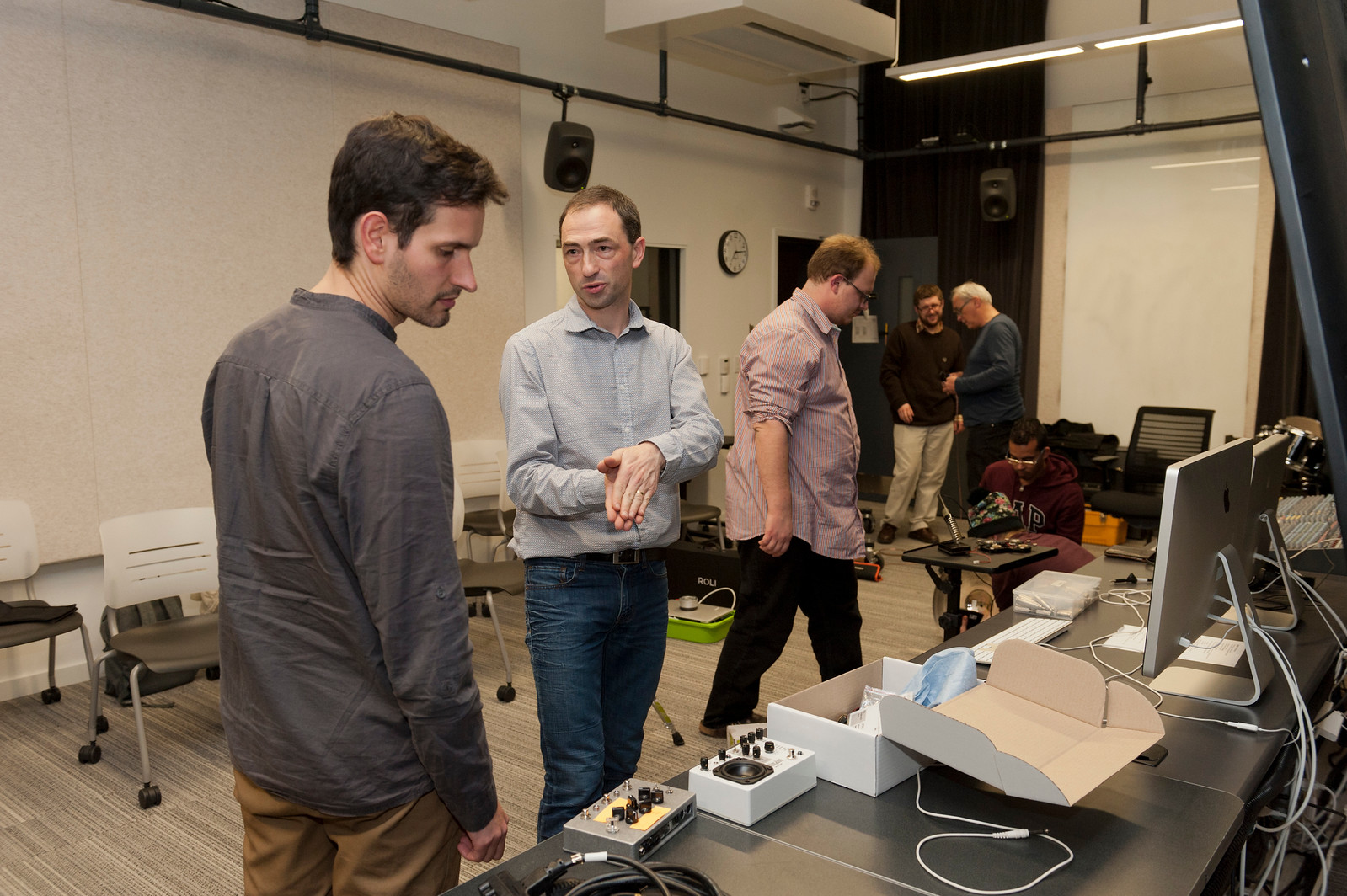
In this course you will develop skills to analyze audio-visual interactive art and put it in an historical perspective. You will learn to manipulate audio and video to create simple works of art. By coding and using other digital tools you will develop programming skills and better understand the creative process that involves art and technology. You will learn to write code in the Max multimedia graphical programming environment, manipulate live audio and video, and write programs for a microcontroller in the Arduino text-based language. You will also use basic electronic components, including sensors, to get information about the physical world and create interactive works of art. Finally, you will develop valuable collaborative skills and use them to work with a team of students on a digital arts project.
2. DIGA:3895 Performance Arts & New Technologies in Society (3 s.h.)
This course surveys some of the major technological innovations that have affected society, live performance, and art in the late 20th and early 21st century. It also looks forward to our rapidly evolving technological world. In this course you will examine theoretical texts, performances, and artistic works that address the impact of technology on the human condition and create original user-based experiences that combine art and technology. Throughout the course you will explore the social, ethical, and cultural implications of technology-dependent artistic practice. By working on projects that use emerging software and hardware, you will explore some of the practical and technical challenges of creating this kind of work. You will use a variety of technologies to create work in the following five categories:
- Telepresence/Liveness (video/web cams, Max/Isadora/Processing)
- Intelligent Architecture/Smart Spaces/Internet of Things (sensors)
- Artificial Intelligence/Transhumanism (robotics, etc.)
- Augmented and Virtual Reality (360 cameras, cardboards, Vive)
- Social media platforms, apps, websites
CS Elective (3 s.h.)
At least one of the electives must be taken from the Computer Science Department, unless the student has already taken a college-level introductory class in Computer Science or proficiency can be demonstrated.
Electives (12 s.h.)
You will choose one of the following tracks for your five electives.
New Modes of Storytelling
Explore how we as storytellers, artists, and engineers can use digital media and new technologies to engage 21st century audiences.
Sound Design
Explore ways to create and produce sound design for live performance, art exhibitions, virtual reality, games and more.
Visual Design
Explore how to create and produce visual design for live performance, interactive sounds, art exhibitions, music, virtual reality, games and more.
Interactive Design & Intelligent Spaces
Explore how the human body interacts with and can control computers, digital technologies, visual and aural media, and physical surroundings to create embodied user experiences.
Choose your own adventure
Work with an advisor to create your own specialized plan of study.
Capstone Project (3 s.h.)
In the capstone project you will create a work that is both artistic and digital, and is shared in a meaningful way with the public. It must be approved by the certificate director at least one semester before the work takes place. You will then ask a faculty member from an appropriate department to serve as a project advisor, and submit a written proposal to the advisor and the certificate director. The proposal must include a description of the work, a statement of why you are prepared to accomplish the work, and a list of equipment, materials, space or funding you need. Once the proposal is approved, you will enroll in an independent study with your advisor as instructor. You will meet with your advisor on a regular basis and engage other faculty and students as needed. Once the project is complete and shared publicly, the advisor will evaluate it and submit a grade.
How do I apply?
Contact the Certificate Coordinator, Daniel Fine at daniel-fine@uiowa.edu, and set up an appointment. If you decide to enroll, you should declare your intention to pursue the certificate at the Academic Advising Center, C210 Pomerantz Center (319-353-5700), or at the Office of Academic Programs & Student Development in 120 Schaeffer Hall (319-335-2633), or on MyUI Student Information Programs of Study & Advisors.
Additional Information
- Students must maintain a GPA of at least 2.00 for the courses in the certificate.
- A course may not be used to satisfy more than one certificate requirement.
- Students who wish to count a course not listed in the chosen track may submit a request for approval to the certificate director.
- Students must meet with the certificate director or advisor every semester to confirm course selections and plan for the capstone project.
- No more than six semester hours may be double counted toward the certificate and a student’s major or minor.
- Courses taken pass/no pass do not count toward the certificate.
